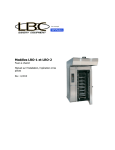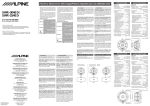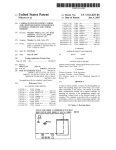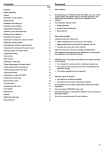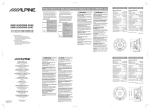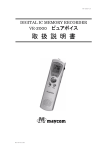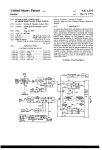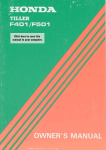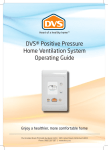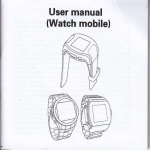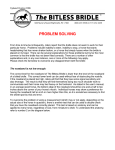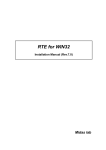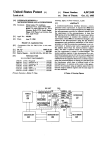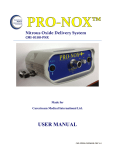Download Computer assisted vehicle service featuring signature analysis and
Transcript
United States Patent [191 [11] [45] Boscove et a1. [54] COMPUTER ASSISTED VEHICLE SERVICE FEATURING SIGNATURE ANALYSIS AND ARTIFICIAL INTELLIGENCE [75] Inventors: Joseph A. Boscove, Highland Beach; Hobart L. Kurtz, Boca Raton, both of Fla.; Jeffrey E. Prince, William P. Wiegand, both of Birmingham, Mich. [73] Assignee: Book: “Electronic Engine Controls”, Chilton Book '00.,"1'9‘85 'Frontispiece, cdntents, pp; 33-41, 239-259, 274, 275. Article: “Speci?c Cell Location Assembly for Dis plays”, R. V. Ballou et a1, IBM Technical Disclosure Bulletin, Feb. 1985, vol. 27, No. 9, pp. 5104-5106. Article: “Computerized Diagnostic Tester at Hand”, Electrical World, Aug. 1, 1975, pp. 36-38. Testing and Diagnosis”, T. A. Cross, IEE Conference Jul. 69, 1976, London, England, pp. 152-159. Primary Examiner—Gary Chin International Business Machines [21] Appl. No.: 869,534 Assistant Examiner—Thomas G. Black Attorney, Agent, or Firm--D. Kendall Cooper; Richard A. Tomlin Jun. 2, 1986 [51] [52] Int. Cl.‘ ..................... .. G06F 11/32; G06F 15/20 US. Cl. ........................ .. 364/551.01; 364/43l.0l; [58] Field of Search ................. .. 364/550, 551, 431.01, 73/116 364/424; 73/116, 117.3 [56] Jan. 3, 1989 . Article: “A Digital Electronic System for Automobile Corporation, Armonk, NY. [22] Filed: 4,796,206 Patent Number: Date of Patent: References Cited U.S. PATENT DOCUMENTS [57] ABSTRACT A computer based technician terminal is connected to a vehicle being serviced using an assembly line data link (ALDL) connection from an on-board computer. The data link provides status information and fault codes. The technician is led through various procedures. Dur ing set up, the technician connects an ALDL cable from 4,375,672 3/1983 Kato et al. ........................ .. 364/551 the terminal to the vehicle, the vehicle indenti?cation number (VIN) is entered and vehicle options are identi ?ed. A fault detection procedure (FDP) in the terminal detects vehicle malfunctions by interrogating data re ceived (via the ALDL) from the on-board computer. A 4,404,639 9/1983 McGuire et al. .. ....... .. 364/551 fault analysis procedure (FAP), using the fault codes 4,418,388 11/1983 Allgor et a1. ..... .. 364/43l.01 4,441,359 4/1984 Ezoe ........................ .. 73/117 from a table as arguments, does a sequential compare 4,125,894 11/1978 Cashel et a1. ..................... .. 364/442 4,270,174 5/1981 Karlin et a1. 4,295,363 10/ 1981 364/551 Buck et al. . . . . . . . . . . . .. 73/117.3 4,476,531 10/1984 Marino et a1. .. 4,649,515 3/1987 Thompson et a1. 4,694,408 9/1987 364/431.0l .. 371/15 X Zaleski .............................. .. 364/551 against the contents of a fault analysis table containing fault codes. In a fault sequencing procedure (FSP), for each fault code passed by the PAP, there is a list con taining the name(s) of one or more isolation procedures. A fault isolation procedure (FIP) is provided for electri OTHER PUBLICATIONS Booklet: “The Guide” (Personal Computer), vol. IV, 1985, International Business Machines Corp. Front & Back Covers, pp. 8, 10, 11, 31, 34, 36. cal or electronic components on the vehicle to perform a complete test of the related part using a multifunction Book: “Programmer’s Guide to the IBM PC”, Peter test probe. Fault repair procedures guide the technician through the proper steps to accomplish the repair, re placement or adjustment required. Norton, 1985, Microsoft Press, Contents, pp. 5, 6, 7, 12, 42-44, 68, 102-106, 130, 143, 144. 6 Claims, 10 Drawing Sheets COMPUTER COMMAND CONTROL DIAGRAM CRANK POS ELECTRONIC CONTROL MODULE I31 AIR CONDITIONING CLUTCH SYSTEM CONTRm. THROTTLE POSITION SENSOR SWITCH (ES) BAROMETRIC SENSOR I16 TRANSMISSION CONVERTER CLUTCH DISTRIBUTOR 3 -WAY CATALYTIC CONVERTER EXHAUST SYSTEM US. Patent Jan. 3, 1989 Sheet 1 of 10 4,796,206 FIG. 1 VEHICLE SYSTEM TECHNICIAN TERMINAL - 103 m rn :0 S o m SUPPORT SYSTEM j 105 "~1o4 MASTER DATA BASE US. Patent Jan. 3, 1989 Sheet 3 of 10 4,796,206 gm US. Patent 4,796,206 Sheet 4 of 10 Jan. 3, 1989 FIG. 4 OVERVIEW OF' TECHNICIAN TERMINAL [151 TOUCH /i52 AT CONTROLLER V/ 512K MEN. KEYBOARD PANEL ALDL AND TOUCH -<->ADAPTER CARD —<—»——— Al-m- E CABLE 1551 /1ss PROBE ADAPTER CARD _ ‘ _" PROBE-IE CABLE 160 / 150 ENHANCED COLOR i167 ADAPTER CARD MEN 142/ as CUMPACT 168/ PRINTER 1200 BAUD SERIAL/PARALLEL _, ADAPTER CARD #2 no’ 172/ 171/ 175/ MODEM POWER __ DISK/DISKETTE ADAPTER CARD a! PC SERIAL/PARALLEL % ADAPTER CARD #1 0 I i CONTROL UNIT 20MB DISK 1.2MB DISKETTE 174/ ' US. Patent Jan. 3, 1989 Sheet 5 of 10 4,796,206 FIG.5 MACHINE COVER ALDL CABLE FIG. 6 PROBE :. SUPPRESSION DEVICE MACHINE COVER D W0" Bum" f’ ‘6° : A |I | /'/'1/ . ' we 162 / (IN 161 J“ 163/ T0 (IN-BOARD T0 omcuosncs COMPUTER CABLE CONTROLLER CONNECTOR CONNECTOR PROBE CABLE I US. Patent hJan.3, 1989 Sheet 6 0f 10 4,796,206 FIG.7 BATTERY CABLE MACHINE COVER FIG. I2 MAIN MENU DIAGNOSTICS SERVICE MANUAL VOLT/OHM METER DYNAMIC DISPLAY SERVICE BULLETIN VEHICLE SPECS INSTRUCTIONS COMMUNICATIONS HELP US. Patent Jan. 3, 1989 Sheet 7 of 10 4,796,206 FIG. 8A 181 ENGINE 21/_J2/110 A ,,// M C ?A THROTTLE CONTROL 2 '1J 1/ /F N EB POSITION MODULE 22 7_| /f l’ gR c sENsOR 180 ECM TO TPS CIRCUIT FIG. 8B jug ‘ 5181 i176 /114 C’ ENGINE 21 1 I OJA I A THROTTLE E B B POSITION 6R c c SENSOR N CONTROL 2 ‘I // J )7 MODULE 22 ‘I_| // (; // X 180 > 162 INTERPOSER CABLE INSERTED ~~ _ ._ AID‘; A: 16°\ i625” | TTTT' ’ y} PROBVE| 1!:IEAD CROSS POINT SWITCH \lllliil TO PROBE CONTROLS ‘" US. Patent Jan. 3, 1989 /10 m ‘—SERVICE IEIIIILEEE ETII‘AIAS MANUAL H VEHICLE 4,796,206 sELEcT SUPPORT TYPE PROCEDURE 1 Sheet 8 of 10 -ET0. SERVICE sET 01> / 9 | FG - 110A 0110A PROCEDURE -001111EOT AL01. I _ FAULT TABLE / FAULT J DETECTION PROCEDURE 15 _> 1 /I6 FAULT f TM DETECTS 1 OR MORE FAULTS 104 PLACES THEM 111 FAULT TABLE 063 ’ n ANALYSIS _ PRocEDuRE~ FAULT ANALYSIS TABLE-‘I/VIN " 20 032 SELECTED 002 002 FAP SEARCHES FOR 052 104 230 FIRST MATCH 111 003 104 010 251 THE EAuLT 041 151 211 ANALYSIS TABLE [155] FAULT 1 11/ 000E 10 U0 FAULT D04 SEQUENCING 003 PROCEDURE ~ 002 001 )4? SELECTED FAULT / +21 HP 023 HP 109 PROCEDURE * RETURN CDDE 'REPAIRED' WILL CAUSE RERUNNING THE EDP TD VALIDATE REPAIR AND CREATE NEW FAULT LIST * RETURN CODE 'NIF' CAUSES NEXT FLIP IN LIST TO BE EXECUTED US. Patent $w5“3; Jan. 3, 1989 Sheet 9 of 10 new 2; I; one So Ia N3 ME:55 E225x3;5 4,796,206 / 2;E3..2z; E22:E8:32: S E W 3 5 . .<901 E2..2:0z; @ as52. 2..25w5.3 sowe.2. 23 25 m1 @@2.20 NMNN?E.2 NZ @a®@ @2;m35 a: / US. Patent Jan. 3, 1989 Sheet 10 0f 10 4,796,206 FIG.H MEMORY MAP 512- —> 500 238' 228: ASPX'CE 45O_ 104K - vA ABLE § 440 430 420— EREOE4IS<PACE V i 410 400- USER PROCEDURE AREA 390380370360 64K MINIMUM usER 22% 128K < GLOBAL 33o- DATA 320- AREA 3i 0- . 64K MINIMUM 3oo— 290 # % 280 270260 250- 00c. VIEW FAC. 20K FEX ggg- WORK AREA 22o_ 21o 50K 19o 1eo- FEX SYSTEM 17016o_ 210K 1 FEX OPERATING ,5o_ 14o- " SYSTEM 130- 140K 12o11o- ‘ ‘ 1oo— 90 so 70 gg- DOS EXTENSIONS 22K 40- SYSTEM AREA 30- I 70K 2010 o- < IBM DOS 48K L. 1 4,796,206 COMPUTER ASSISTED VEHICLE SERVICE FEATURING SIGNATURE ANALYSIS AND ARTIFICIAL INTELLIGENCE provide semi-automated diagnostic apparatus for vehi cles, such apparatus incorporating computer diagnos CROSS REFERENCE TO RELATED ' 2 cants’ system procedures are distinctively different from those systems. The primary objective of the present invention is to tics. APPLICATION SUMMARY OF THE INVENTION In the technique disclosed herein, programs execute Cross reference is made to the following patent appli cations, such application having a common ?ling data on an off-board computer, and by use of visual display, prompt a technician to change the vehicle’s state. For and a common assignee with the present application: US. patent application Ser. No. 06/869,870 ?led June 2, 1986, entitled “Fault Isolation for Vehicle Using A Multifunction Test Probe” having R. V. Ballou et al as inventors. each state change, a sequence of tests are executed com paring information in data streams from a vehicle on board computer against known good parameters or 15 signatures. The signature analysis includes interrogation PRIOR ART REFERENCES The following prior art references are of interest and are referred to in the speci?cation. The ?rst four refer ences are speci?cally incorporated by reference herein. parameters. 1. Booklet: “The Guide” (Personal Computers), Vol ume IV, 1985, International Business Machines Corpo ration. Front and back covers, Pp. 8, l0, ll, 31, 34, 36. 2. Book: “Programmer’s Guide to the IBM PC”, Peter Norton 1985, Microsoft Press, Contents, Pp. 5, 6, programs can be executed to provide detection capabil ity for more vehicle problems, Building on this ability to detect faults with a computer, the present system design describes how, by the use of arti?cial intelligence con 7, 12, 42-44, 68, 102-106, 130, 143. 144. 3. Book: “Electronic Engine Controls”, Chilton Book Co., 1985, Frontispiece, Contents, Pp. 38-41, 239-259, 274-275. 4. Article” “Speciic Cell Location Assembly for Dis plays” R. V. Ballou et a1, IBM Technical Disclosure of single parameters and the correlation of multiple In the service environment, where more time can be allocated for testing than that allowed at the end of an assembly line, enhanced versions of the end of line test 25 cepts, a technician terminal can become “smarter” in it’s ability to diagnose more vehicle problems. For a better understanding of the present invention, together with other and further advantages and features thereof, reference is made to the description taken in connection with the accompanying drawings, the scope Bulletin February 1985, Vol. 27, No. 9, Pp. 5104-5106. of the invention being pointed out in the appended 5. Article: “Computerized Diagnostic Tester at claims. Hand”, Electrical World, Aug. 1, 1975, Pp. 36-38. BRIEF DESCRIPTION OF THE DRAWINGS 6. Article: “A Digital Electronic System for Automo bile TEsting and Diagnosis”, T.A. Cross, IEE Confer 35 Referring to the drawings: ence July 6-9, 1976 London, England, Pp. 152-159. FIG. 1 illustrates a network in which one or more technician terminals such as that described herein may BACKGROUND OF THE INVENTION be connected. This invention relates to computerized automotive FIG. 2 illustrates an engine control system for use on vehicle diagnostic apparatus and more particularly to a 40 a vehicle shown in FIG. 1. more ef?cient apparatus of this nature having improved FIG. 3 is a perspective view of the technician termi performance in relation to the diagnostic procedures nal in a console configuration. and related computer programs. FIG. 4 is a block diagram of the major components in Microcomputers, electronic sensors and other com the technician terminal. 45 ponents are incorporated into vehicles to monitor and FIGS. 5, 6 and 7 illustrate various cables for use with control engine operations and other functions. the technician terminal. The increasing amount of electronic, electrical and FIGS. 8A and 8B illustrate interposer cable usage in electro-mechanical content in automobile designs has conjunction with the cable of FIG. 6. created a severe problem for the vehicle servicing envi ronment. The service tools available for servicing do 50 FIG. 9 illustrates the diagnostic procedures described herein. not provide the capabilities needed to diagnose and FIGS. 10A, B, and C illustrate tables as they are repair problems which are directly or indirectly related organized in an alternative diagnostic procedure. to the electronics. This has resulted in long diagnostic FIG. 11 shows a typical utilization of the storage in times, incorrect repairs and multiple service visits for the same problem. - Considering the prior art references noted above, 55 the technician terminal computer, a memory map for the software execution system. FIG. 12 shows a main menu screen displayed on a Reference 1, “The Guide” describes an IBM Personal Computer AT that is a useful element in the diagnostic system set forth herein. Reference 2, The Norton book, illustrates various characteristics of the IBM Personal FIG. 7) Computer AT such as programming, the microproces sor, keyboard, etc. Reference 3, the Chilton book, de scribes engine control modules and systems that that are utilized herein. Reference 4, the Ballou et al article, A technique is described herein which makes use of a computer based technician terminal that connects to a technician terminal monitor. (Same drawing sheet as DETAILED DESCRIPTION vehicle being serviced using the assembly line data link describes a representative touch panel that may be used 65 (ALDL). This data link is used by the various vehicle manufacturers to test the vehicle at the end of the as in the practice of the invention. References 5 and 6 relate to computer-based diagnostic systems for engines and are merely representative of prior systems. Appli sembly lines. It allows an off-board computer to com municate with the computers on-board the vehicle. 3 4,796,206 When commanded, the on-board computer outputs data frames on the data link which contain information about the state of the various sensors, switches, relays and actuators that are controlled by the on-board comput ers. Included in the data are error codes representing faults detected and stored by the on-board computers. The network of FIG. 1 includes a technician terminal 100 interfaced with a vehicle 101 and more speci?cally with the vehicle computer control system 102. Termi~ nal 100 has a data entry facility and touch interactive/ menu driven display, and also incorporates a computer such as the IBM Personal Computer AT, Prior Art References l and 2. A touch panel for the technician terminal is like that described in the Ballou et al Prior Art Reference 4. The computer control system 102 is like the control systems described in the Chilton Prior Art Reference 3, as further illustrated in FIG. 2 herein. Service Support System 103, FIG. 1, may support 4 the following components or sub-systems; charcoal canister purge control 124, AIR Management System 123, idle speed control 132, automatic transmission con verter clutch 128, distributor 122 ignition timing, EGR valve control 125, EFE control 130, and the air condi tioner compressor clutch 131. The CCC ECM is equipped with a PROM assembly similar to the one used in the C-4 ECM. The Air Management System 123 is an emission con trol that provides additional oxygen either to the cata lyst or the cylinder head ports (in some cases exhaust manifold), is composed of an air switching valve and/or an air control valve, controls the air pump ?ow and is itself controlled by the ECM 110. The charcoal canister purge control 124 is an electri cally operated solenoid valve controlled by ECM 110 and when energized, blocks vacuum from reaching the canister purge valve. When ECM 110 de-energizes the purge control solenoid, vacuum is allowed to reach the vehicle data base. A host computer 105 including a 20 canister and operate the purge valve. This releases the master data base 104 acts as a service support system fuel vapors collected in the canister into the induction interface to the user company headquarters, provides system. network management and supplies realtime feedback to The EGR valve control solenoid 125 is activated by one or more technician terminals and serve as a regional manufacturing and engineering groups, for example. ECM 110. When the engine is cold, the ECM energizes Alternatively, the technician terminals may be con 25 the solenoid. This blocks the vacuum signal to the EGR nected directly to the host computer 105 and data base valve 125. When the engine is warm, the ECM de-ener 104. gizes the solenoid and the vacuum signal is allowed to The automotive industry has for the past several reach and activate the EGR valve. years incorporated microcomputers, electronic sensors The Transmission Converter Clutch (TCC) 128 lock and many electro-mechanical components into vehicle is controlled by the ECM 110 through an electrical designs to provide better monitoring and control of the solenoid in the transmission. When the vehicle speed engine operations. More electronics are being added to sensor in the instrument panel signals the ECM that the provide control for other functions as well. Transmis vehicle has reached the correct speed, the ECM ener gizes the solenoid which allows the torque converter to sion, radio, heat/ ventilation/air conditioners, instru: ment panels, memory seats and mirrors, etc. are some 35 mechanically couple the engine to the transmission. examples. Future designs will include ever increasing amounts of hi-tech features such as cellular radio tele When the brake pedal is pushed or during deceleration, passing, etc., the ECM returns the transmission to ?uid phone, vehicle attitude, collision avoidance, etc. drive. FIG. 2 illustrates an engine control system used in The idle speed control 132 adjusts the idle speed to General Motors (GM) vehicles since the 1981 model 40 load conditions, and lowers the idle speed under no year and designated the Computer Command Control (CCC) System. This system has many components in load or low-load conditions to conserve gasoline. common with the earlier GM system referred to as the (ECM) 110, which is capable of monitoring and adjust on some engines provides rapid heat to the engine in duction system to promote smooth start-up and opera tion. As noted, the service tools heretofore available for ing more sensors and components than the ECM used servicing have not provided the necessary capabilities Computer Controlled Catalytic Converter (C-4) sys tem. These include the Electronic Control Module The Early Fuel Evaporative (EFE) system 130 used needed to diagnose and repair problems which are di cally controlled variable-mixture carburetor 112, a rectly or indirectly related to the vehicle electronics. As three way catalytic converter 113, throttle position 50 a result there have been long diagnostic times, incorrect sensor 114 and coolant temperature sensor 115, a baro repairs and multiple service visits for the same problem. metric pressure (BARO) sensor 116, a manifold absolute The technician terminal FIGS. 3 and 4, are designed pressure (MAP) sensor 117, a “Check Engine” light 120 to overcome these problems and may typically incorpo on the instrument cluster, and an Electronic Spark Tim rate the following elements: ing (EST) distributor 122, which on some engines (tur 55 PC/AT Based Controller bocharged) is equipped with an Electronic Spark Con 512KB Memory trol (ESC) that retards ignition spark under some condi 1.2 MB 5.25 Diskette Drive 20MB Fixed Disk Drive tions (detonation, etc.). Other components used by the CCC System include 13" Color Monitor the Air Injection Reaction (AIR) Management System Infrared (I/R) Touch Panel 123, charcoal canister purge control 124, Exhaust Gas Communications Card Recirculation (EGR) valve control 125, engine speed ALDL Attachment Card & Cables sensor 129, transmission torque converter clutch sole Probe Attachment Card & Cables noid 128 (automatic transmission models only), idle Printer speed control 132, and early fuel evaporative (EFE) 65 Mobile Work STation system 130. Fault Isolation Repair Procedure Program Executor The ECM 110, in addition to monitoring sensors and (FEX) Diagnostic Executive sending a control signal to the carburetor, also controls Remote Update Facility on the 04 system, an oxygen sensor 111, an electroni 5 4,796,206 FEX Development System (FDS) tional circuits. The ALDL and touch adapter card 152 located in the technician terminal reads data presented to the ALDL connector from the vehicle ECM and formats the data In FIG. 3, the technician terminal is housed in a con sole 140 mounted on wheels, such as wheel 141 for greater mobility. Console 140 has a display monitor 142 integrally incorporated therewith, monitor 142 having an infrared touch panel on the face thereof. A keyboard, such as the PC AT keyboard, is incorporated within drawer 143. The console also has a printer 144. Drawers 145 and 146 are provided for storage, drawer 146 ac commodating cables, for example. 6 reading, inject source voltage/ ground or verify opera in a standard manner acceptable to the PC. Card 152 is programmable and accommodates various wiring con ?gurations, data structures, and line speeds. A FEX Development System (FDS) is used that 10 involves PC utility programs that run on the IBM PC to support development of Vehicle Service Procedures. Examples of the utility programs are: Table Generator Procedure Generator FIG. 4 is an overview of the internal interconnections and primary elements in the technician terminal._This includes the PC AT controller 150, infrared touch panel 151 associated with the display monitor 142, an ALDL and touch adapter Card 152, which besides panel 151 inputs, receives input signals from the on-board ECM by way of the ALDL cable 153, also shown in FIG. 5. Service Bulletin Generator File Utilities The Fault Isolation Repair Procedure Program Exec utor (FEX) is the systems control program that operates the Technician Terminal. The Vehicle Service Proce 5 for interconnection of the technician terminal with the 20 dures operate under control of PBX to perform the ECM. following functions: A probe adapter card 158 receives signals from a Guide Technician through service procedures probe cable 160, also shown in greater detail in FIGS. 6 Retrieve and store data Cable 153 has connectors 154 and 155 as shown in FIG. and 8. Execute diagnostic procedures Build and display panels IN FIG. 6, probe cable 160 comprises portions 161 and 162 as well as a device 163 for use by the technician Control Test Probe operations during diagnostics as more fully described in the co Control ALDL Interface pending R. V. Ballou et al patent application cross In the technique disclosed herein, programs execut referenced above. ing on the off-bard computer in the technician terminal FIGS. 8A and 8B illustrate the attachment of the test 30 140, FIGS. 3 and 4, by use of a visual display, prompt probe cable 160 to a component. Normally ECM 110 is the technician to change the vehicle’s state. For each connected to component 114 by way of cable 180 with state change a sequence of tests are executed comparing connector 181. As mentioned, Probe 160 consists of a information from the data streams against known good multiple conductor cable attached to the probe control ler through adapter card 158 and terminated externally at a zero force insertion type connector 176, shown diagrammatically in' FIG. 8B. The attachment of the 35 signatures. The signature analysis includes interrogation of single parameters and the correlation of multiple parameters. In the service environment, where more time can be allocated for testing than that allowed at the end of an assembly line, enhanced versions of the end of line test the component connector 176 on one end and a connec 40 programs can be executed to provide detection capabil tor 177 which mates with the test probe head 163 on the ity for more vehicle problems. Building on this ability to other end. This cable is called a vehicle probe interface detect faults with a computer, the present system design (V PI). The connector 176 of the VPI cable is inserted in describes how, by the use of arti?cial intelligence con line with the component to be tested and the other cepts, a technician terminal can become “smarter” in it’s connector 177 is plugged into the probe head. ability to diagnose more vehicle problems. Also, as Use of the probe is fully described in the Ballou et a1 de?ned in the Ballou et al patent application a multi probe to a component to be tested such as throttle posi tion sensor 114 is accomplished by use of cables having patent application. The technician terminal, may for battery checking purposes, incorporate a battery cable 165, FIG. 7. function program controlled probe supports fault isola tion to the component to be replaced, repaired or ad justed. The system structure defines a hierarchical set of An enhanced color adapter card 167, FIG. 4, is con 50 programs which utilize the contents of tables that spec nected to monitor 142 for output of display signals. A ify what vehicle states to set, which tests to run, which signatures to use, and what repair actions to take. printer 168 is driven by way of another adapter card The technician terminal would usually be incorpo (#1) designated 169, while a modem 170 and power rated in the communications network, FIG. 1. The control unit 171 are connected to controlled 150 by way network connects all technician terminals to the data' of adapter card (#2) designated 172. Modem 170 can be base in the support system 103, FIG. 1, and to the host an internal modem rather than external as shown. Both computer 105 which collects statistics on a periodic a 20 megabyte hard disk ?le 173 and a 1.2 megabyte basis relative to the repair actions performed on the ?oppy diskette ?le 174 are accommodated by adapter vehicles, the data being stored in the master data base card 175. 104. As indicated, the technician terminals may be con The infrared touch panel and display 142 interface nected directly to the host via a network. Statistical with the IBM PC AT electronics for technician input. analysis programs are used to correlate the readings The multi-function measurement cables/probes 153, taken during problem analysis and isolation against the 160 supported by adapter cards 152 and 158 are for use actual repair actions performed. Based on the results of by the technician in diagnosing and isolating a vehicle 65 the analysis, the signature tables, the isolation sequence failure. tables and the probe test tables are updated to reflect Functions performed by probe 160 are controlled by this later level of “learning”. The updated tables are Vehicle Service Procedures programmed in controller distributed to all technician terminals over the network. 150 which interactively request the technician to take 7 4,796,206 The network is also used to provide updates of new or 8 In the Fault Sequencing Procedure 20 (FSP), for each fault code passed by the FAP, there is a list in the revised programs and display panels. The system procedure is illustrated in the flow chart form of tables 21 containing the name(s) of one or more shown in FIG. 9 and an alternative procedure makes isolation procedures. These lists are also updated by the 5 host system to reflect the results of statistical analysis of use of tables shown in FIGS. 10A, B, and C. The Main Menu Procedure 10 is active whenever the service histories. Each procedure name in the list repre terminal is powered on but not in use. It displays the sents a component that has required a repair action main menu on the monitor from which the technician selects the type of support desired. A typical main menu contains more than one name, they are ordered based is shown in FIG. 12. (Same drawing sheet as FIG. 7) upon frequency of cause. when the related fault code was detected. If the list This includes Vehicle Service Procedure (V SP) 11 The FSP 20 causes the procedure names at the top of which leads the technician through the set up steps the list to execute at the next hierarchical level. The required for any service. These include: FAP and FSP procedures in blocks 16 and 20 may be Validate vehicle power and ground combined into one procedure, if desired and only one systems 15 table may be set up to accommodate the data stored in Connect ALDL cable to the vehicle tables 17 and 21. Input the vehicle identi?cation number (VIN) Identify certain vehicle options The Fault Detection Procedure 12 (FDP) detects vehicle malfunctions by interrogating data received (via The combining of the Fault Analysis Procedure (FAP) and the Fault Sequencing Procedure (FSP) into 20 the ALDL) from the on-board computer. The data is read during different vehicle states. The Fault Analysis Procedure: 1. Sorts the fault codes in the fault table, 15a, FIG. Ignition on (not running) Engine cranking Engine idling one procedure called the Fault Analysis Procedure makes use of the tables shown in FIGS. 10A, B, and C. 10A. 25 Engine at 2500 RPM The data read represents the state of the various switches, sensors and actuators on the vehicle. The values read from each of the components are compared against known good parameters which are unique to the vehicle under test as identi?ed by the VIN. Values from the components are correlated to establish that, even through they are within limits, they are also correct relative to the state of the vehicle and relative to the values read from other components having inter-depen 35 2. Searches the fault analysis table 17a, FIG. 10B for a line where all of the fault codes in that line are listed in the fault table. 3. When a match is found then the FIPs listed in the Fault Analysis Table 170 are executed in order, table 21a, FIG. 10C. 4. Checks to see if it has already executed that FIP. If it has then that FIP is not executed a second time. 5. Continues to execute the FIPs on matching line in the Fault Analysis Table 17a until the problem is ?xed or there are no more FIPs to execute. dencies. All_ faults detected during this procedure are placed 6. If the problem is found and repaired the control is passed back to the Fault Detection Procedure 12, in table 15 and control is passed to the next hierarchical procedure. Each fault type is de?ned by a fault code. FIG. 9, so it can recheck for faults. 7. If none of the FIPs listed on the line in the Fault The Fault Analysis Procedure 16 (FAP), using the Analysis Table 170 solve the problem then the fault codes from the tables 15 are arguments, does a FAP goes to the next line in table and looks for sequential compare against the contents of the Fault Analysis Table 17. Each entry in this table contains one matches (Step 2 above). Given the faults logged in the Fault Table 15a and the associated Fault Analysis table 170 the circled FIPs in or more fault codes. Multiple codes in an entry repre sent a set that when detected concurrently indicate a 45 FIG. 10B would be executed. ' A Fault Isolation Procedure as at block 22 (FIP) is specific component malfunction as being the most prob executed for the electrical or electronic components on able cause. A different fault code is assigned to each the vehicle the procedure being selected from the group code set. Fault Analysis Table 17 is continuously updated by of procedures chosen by FSP 20. These procedures the network host computer and redistributed to all ter 50 perform a complete test of the related part using the multi-function test probe 160. A complete “black box” minals in the network on some periodic basis, such as analysis of the component is performed. There are, of daily, but overnight so as to have minimum effect on course, some components such as lights, radios, power system availability. The updates to the tables are based windows, door locks, etc. that are not covered by pro upon statistical analysis of all Service Incident Reports (SIR’s) that have been stored in the host data base since 55 cedures. Many vehicles already have FIPs which cover these components. There are also FIPs for non-electri the last update period. A. SIR is generated and sent to cal components such as throttle linkages, vacuum hoses, the host for each repair action performed on a vehicle. fuel system, etc. ' Each SIR contains the VIN, detected fault codes, com This test of components has one of the following ponent readings and repair action taken. This mecha nism, over time, increases the probability of finding and 60 results: The test fails which will cause the FIP to invoke the correcting the malfunctioning part on the first pass through the fault analysis table since the table is ordered proper procedure to guide the technician in the based on frequency of success relative to the codes. The search of the table continues until an entry is found whose fault codes match one or more of those 65 repair, replace or adjustment required. When the passed by the FDP. The fault code found such as “236” at block 18 in that entry is passed to the next hierarchi the FDP to determine if the repair action elimi nated all the faults found on the initial pass. If not, then the same scenario is again followed. cal procedure. repair action is completed, the same FIP will re-run the test to validate the fix, then return control to 9 4,796,206 10 (4) accessing and selecting in a Fault Sequencing Procedure, for each fault supplied by the Fault If the test completes with no failures, the FIP returns control to the PAP which selects the next FIP names in the list and another suspected component is tested. If there are no other FIP names in the list, the FAP continues to search the fault analysis table until another match is found. This scenario is re Analysis Procedure, one or more isolation proce dures stored in a light in said diagnostic controller, such list each being related to a particular compo nent in said vehicle and also being periodically updated from said host data base, the Fault Se peated until all faults have been eliminated. Thus, the fault repair procedures guide the technician through the proper steps to accomplish the repair, re placement or adjustment required. This guidance is quencing Procedure initiating execution of the procedure at the top of the list; (5) utilizing said selected Fault Isolation Procedure provided by sequences of display panels containing and additional Fault Isolation Procedures in said list for testing of a related part in said vehicle by providing guidance via said display means for re such things as adjustment procedures, part locations, removal sequences, etc. In the event that no trouble is found after having exercised all the FIPs that were invoked relative to the 15 detected faults, communication may be established through the network to the host system 105 and the fault codes detected, along with user de?ned symptoms, pairing, replacing or adjusting the related compo nent. 2. The method of claim 1 further comprising the step of: repeating the selected one or more Fault Isolation Procedures in the event a check determines that are transmitted to the data base 104. Host resident pro grams interrogate the service history ?les and transmit 20 the fault has not been corrected. 3. The method of claim 1 further comprising the step of: transmitting results of the Fault Isolation Procedures to a host computer for analysis. accomplish the procedures set forth in connection with 25 4. A diagnostic method for use in diagnosing a vehi FIG. 9. cle utilizing a diagnostic system, the vehicle having an While a preferred embodiment of the invention has on-board computer control system for monitoring and been illustrated and described, it is to be understood that controlling vehicle functions and the diagnostic system there is no intention to limit the invention to the precise including a technician terminal having a diagnostic construction herein disclosed and the right is reserved controller for processing diagnostic signals representa to all changes and modi?cations coming within the tive of vehicle conditions said controller having data scope of the invention as de?ned in the appended entry means, data output means and storage means for claims. storing vehicle parameters and diagnostic routines and We claim: 1. A diagnostic method for use in diagnosing a vehi 35 said technician terminal having a display means for providing instructions for fault repair sequences, said cle utilizing a diagnostic system, the vehicle having an method comprising the steps of: on-board computer control system for monitoring and back to the terminal additional fault isolation proce dures to be tried. FIG. 11 illustrates a memory map assignment in PC AT controller 150, FIG. 4, for the programs used to (l) displaying a main menu on said display means from which a vehicle setup is initiated including controlling vehicle functions and the diagnostic system including a technician terminal having a diagnostic connecting the vehicle to the terminal and identify controller for processing diagnostic signals representa ing the vehicle and any vehicle options; tive of vehicle conditions, said controller having data (2) utilizing a Fault Detection Procedure for detect entry means, data output means and storage means for ing vehicle malfunctions by interrogating data re storing vehicle parameters and diagnostic routines and ceived from said on-board computer during differ ent vehicle states: ignition on (not running), engine said terminal having a display means for providing in structions for fault repair sequences, said method com 45 cranking, engine idling and engine at higher speed prising the steps of: and comparing said data with known parameters in said diagnostic controller storage means, any faults detected being stored in a fault table by fault code; (3) analyzing by a Fault Analysis Procedure the de (1) displaying a main menu on said display means from which a vehicle setup is initiated including connecting the vehicle to the terminal and identify ing the vehicle and any vehicle options; ' (2) utilizing a Fault Detection Procedure for detect ing vehicle malfunctions by interrogating data re ceived from said on-board computer during differ ent vehicle states: ignition on (not running), engine cranking, engine idling and engine at higher speed tected fault codes stored in the fault table by com parison with lines of fault codes stored in a ?rst portion of a Fault Analysis Table to indicate a 55 and comparing said data with known parameters in said diagnostic controller storage means, any faults detected being stored in a fault table by fault code; (3) analyzing by a Fault Analysis Procedure the de tected fault codes stored in the fault table by com 60 parison with fault codes stored in a Fault Analysis Table to indicate a speci?c component suspected of being at fault, the Fault Analysis Table being peri odically up-dated from a host data base by statisti cal analysis of prior service reports and the Fault 65 Analysis Procedure supplying all fault codes in the speci?c component suspected of being at fault, accessing and selecting for each fault supplied by the Fault Analysis Procedure, one or more Fault Isolation Procedures stored in the form of fault code lists in a second portion of said Fault Analysis Table, such lists each being related to a particular component in said vehicle, storing one or more selected Fault Isolation Procedures in a predeter mined order, the Fault Analysis Procedure initiat ing execution of the ?rst Fault Isolation Procedure at the top of each list; (4) utilizing the said ?rst Fault Isolation Procedure and additional stored Fault Isolation Procedures if Fault Analysis Table that match one or more of required, for testingof a related component in said those provided by the Fault Detection Procedure; vehicle by providing guidance via said display 11 4,796,206 12 Procedures in the event a check determines that the fault has not been corrected. means for repairing, replacing or adjusting the 1'elated component 6. The method of claim 4 further comprising the step 5. The method of claim 4 further comprising the step of: _ _ (II of _ transmlttmg results of the Fault Isolation Procedures to a host computer for analysis. repeating the selected one or more Fault Isolation * 10 15 20 25 30 35 45 55 65

















